Between February 1981 and December 1984, in less than four years, Henry, a resident of Long Island, then of New Jersey, took around 5,500 photographs of his wife Martha, naked or undressing; four a day on average.
In these images, Martha, who appears to be in her 60s, is increasingly bored, detached, alienated from what is happening to her, rarely looking at the camera, submissive to her husband's directives. This one is particularly interested in his wife's breasts, her bras, asking her to squeeze her breasts with his hands; many images also represent her completely naked, standing or lying down, a body marked by age, but still firm. Others are close-ups of her breasts, nipples and areolas. On the other hand, the pubis and the vulva, just like the buttocks, never appear in close-up.

No tenderness in these photographs, no complicity, no eroticism either: just an obsessive voyeurism of the female body. We are very far from the loving work of Eugene von Bruenchenheim , full of tenderness and respect for Marie, always beautiful and complicit. The word that comes to mind here is rather repetitive taxonomy, even if, in several photographs, Martha strikes a pose, makes mischievous or surprised faces, rarely smiles, in short engages.
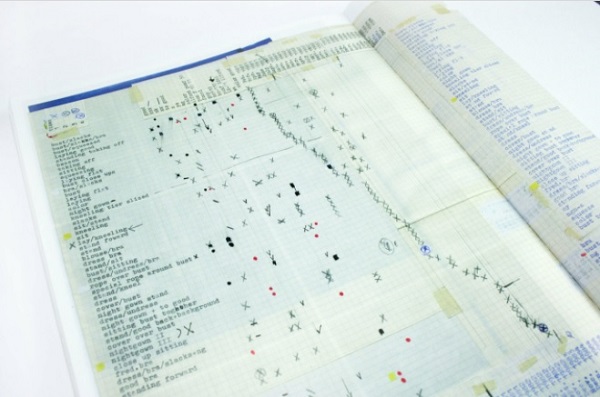
Henry organizes a desk lined with these photographs of naked Martha. Most are in black and white, the contact sheets are marked with post-its dating them, but also noting the themes (“bent”, “squeezing”, “rope over bust”, “kneeling”). A double-entry table summarizes the dates and the technical or postural characteristics of the photographs, with, in a corner, future projects: smoking, hands on the back of the neck, from behind, etc.
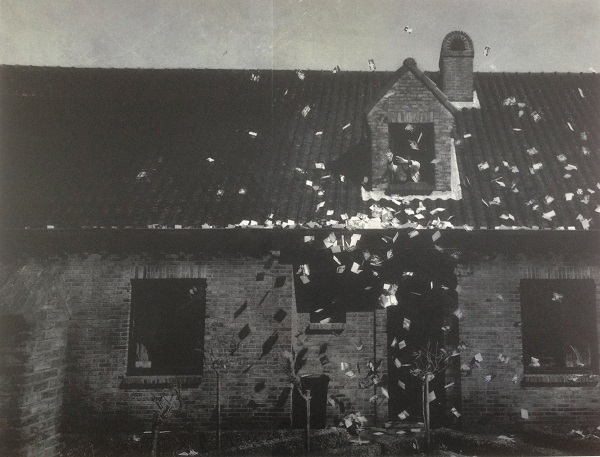
At the end of 1984 or the beginning of 1985, Martha was suffocated in this threesome with the camera, and she left her husband: she refused this photographic obsession with her body, the marriage was (for this reason and no doubt others) a failure. . Before leaving, she throws prints out of the window of their house, the photographs litter the garden and the path, flying away in the wind.

Henry, deprived of the object of his desire, can only enjoy the preserved photographs of his wife. It is then, it seems to me, that, from an obsessive but banal voyeur, he becomes an artist in the full sense: he sublimates the frustration of the absence of the beloved woman to move on to a more creative activity than simply taking sight; he creates new, phantasmagorical forms from his real forms. Martha has become an abstraction, an artistic material. He first designed about fifty collages, assembling such and such a detail of Martha's anatomy (except her face) to make erotic compositions that can be linked to certain surrealists such as Georges Hugnet or Nush Éluard , or even certain images. by André Kertesz. In the contact sheets, there are four color photographs from April 1981 where, already, Henry, through multiple exposure, had experimented with breast multiplication (see below).
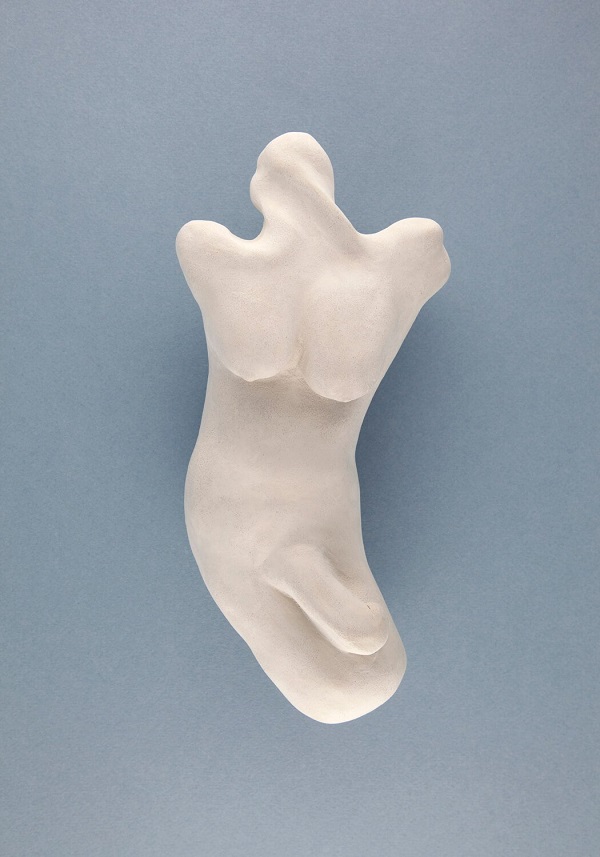
From these collages, he moves on to sculpture: surprisingly soft and tender multiple female bodies, 17 clay figurines with silver sand. Without having the systemic character of Die Puppe, we are there in a similar vein, especially if we remember that Hans Bellmer made this doll when he was withdrawing from the world, in his case faced with the rise of Nazism. We also think of certain sculptures by Victor Brauner or the Artemis polymast of Ephesus. It is quite fascinating to see how Henry thus develops a form of artistic creation, well beyond his obsessive photographs, which can obviously be placed in the catch-all category of art brut. Once done, he goes to live in the woods, like a trapper, feeding on the wild animals he traps, and disappears.
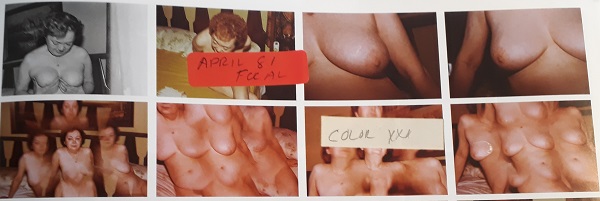
How do we know all this? Dutch artist Mariken Wessels , who has already produced several series around found photographs, is said to have obtained these photographs, as well as other images of the couple, their house and Henry's cabin in the woods, from two friends and neighbors of the couple, who would have recovered the set after Henry's departure, and of whom Mariken Wessels says she was the neighbor when, then an actress, she stayed in New York in 1996-97. She made a 330-page book of it, with very little text (2 or 3 pages only) on the occasion of her exhibition in The Hague in 2017; the book has just been reissued by Art Paper Editions. The book (which won the Author's Book Prize at Arles in 2016) includes 147 contact sheets of 36 images each (i.e. 5292 shots) on glossy paper, the reproduction of 50 collages and 17 figurines, and other photographs of their childhood, their marriage , their house, Henry's office, an enigmatic loose leaf of Merry Christmas beginning with “There he is, your son, Ma”,… The title “Taking Off” can mean taking off, taking off (the bra); it can also mean to take off, to leave (like Martha).
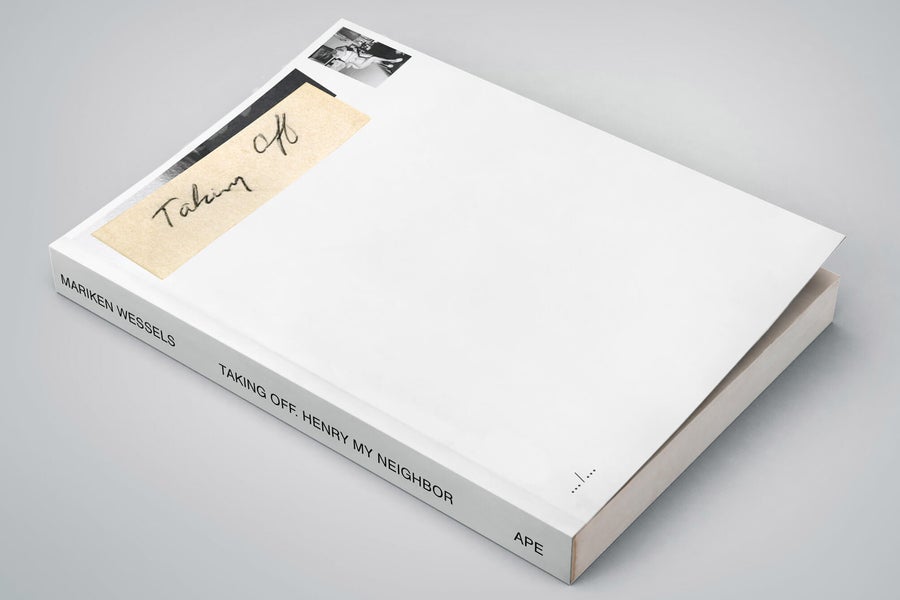
Is it really an archive of photographs found in a somewhat incredible way? Or is it entirely a fictional creation of the artist? The only clue I found is the names of the two neighbors who allegedly entrusted the archive to Mariken Wessels: Dorothy Bartlett (like him) and Edward F. Caroll (almost like him). Moreover the Hackettstown Heritage Center for Arts & Crafts, where the sculpted figurines of Henry would be deposited, does not seem to exist. But also the feeling that it's too perfect, too well done. Who knows? Only this blog, to my knowledge, has also expressed doubt about the veracity of this archive.
